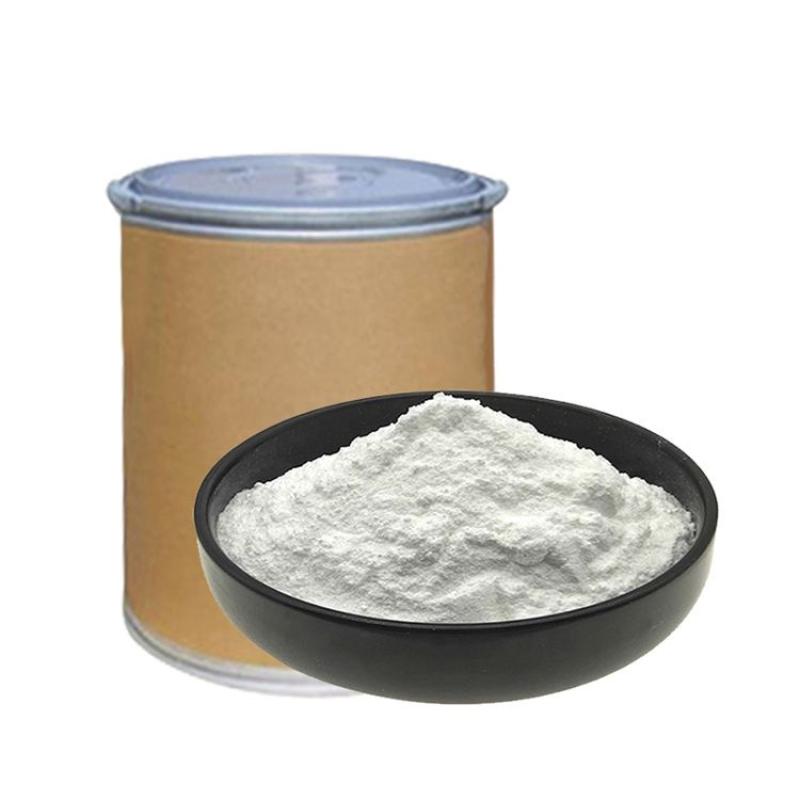MF: C4H8MnN2S4ZnMW: 332.71CAS: 8018-01-7Melting point of 192-194 ° CDensity of 1.92 g/cm3Vapor pressure, Negligible AT, 20 °CFlash point is 138 ° CStorage condition APPROX 4°CWater solubility 6-20 mgl-1 (20 °C)Product description:Pure mancozeb is white powder, industrial products are gray white or light yellow powder, with rotten egg taste.
Contact Now
Common name: AcetamipridChemical name: N-[(6-chloro-3-pyridyl)methyl]-N'-cyano-N-methyl-acetamidineMolecular formula: C10H11ClN4Structural formula:Molecular weight: 222.67CAS No. : 135410-20-7Physical and chemical properties:Acetamiprid raw drug is white crystal, content of more than 99%, melting point of 101 ~ 103.3℃, vapor pressure < 0.33×10-6Pa(25℃), slightly soluble in water, solubility in water is 4.2g/L, soluble in acetone, methanol, ethanol, dichloromethane, chloroform, acetonitrile, etc.
Contact Now
Common name: Terbutryn Chemical name:N-(1,1-dimethylethyl)-N’-ethyl-6-(methylthio)-1,3,5-triazine-2,4-diamine; Saterb; PrebaneMolecular formula: C10H19N5SStructural formula:Molecular weight: 241.36CAS No. : 886-50-0Physical and chemical properties:This product is white powder. m.p.104~105℃, vapor pressure 0.128×10-3Pa (20℃). It is easily soluble in organic solvents such as isopropanol and xylene. The solubility in water at 20°C is 58mg/L.
Contact Now
Structural formula:Molecular weight: 449.85CAS No. : 91465-08-6Physical and chemical properties:Pure product is white solid, industrial product is light yellow solid. Steam pressure 200×10-9Pa(2.67×10-7Pa)(20℃)Specifications:95%TC, 25%EC, 25%WP, 2.5%EWPacking:25Kg fiber drum or 25 Kg kraft bag.Usage:Pyrethroid is a tactile, gastrotoxic pyrethroid insecticide. Used to control pests on cotton, vegetables, tobacco and other crops.
Contact Now
MF: C4H8MnN2S4ZnMW: 332.71CAS: 8018-01-7Melting point of 192-194 ° CDensity of 1.92 g/cm3Vapor pressure, Negligible AT, 20 °CFlash point is 138 ° CStorage condition APPROX 4°CWater solubility 6-20 mgl-1 (20 °C)Product description:Pure mancozeb is white powder, industrial products are gray white or light yellow powder, with rotten egg taste.
Contact Now
Utilization:Acetamiprid can be used to govern aphids, planthoppers, thrips and lepidoptera pests of rice, greens, fruit bushes, tea timber, and many others. at the concentration of fifty ~ a hundred mg/l, it is able to effectively control cotton aphid, vegetable aphid, peach small fit to be eaten insect, and kill eggs.Common name: AcetamipridChemical name: N-[(6-chloro-3-pyridyl)methyl]-N'-cyano-N-methyl-acetamidineMolecular formula: C10H11ClN4Structural formula:Molecular weight: 222.67CAS No.
Contact Now
Common name: Cyhalofop-ButylChemical name: (R)-2-[4-(4-cyano-2-fluorophenoxy)phenoxy] butyl propionateMolecular formula: C20H20FNO4Structural formula:Molecular weight: 357.38CAS No. : 122008-85-9Physical and chemical properties:White solid crystal, melting point 50℃, vapor pressure: 1.2x10-3mPa (20℃), lipophilic-hydrophilic equilibrium constant KowlogP=3.31, water solubility is 0.7ppm (pH7, 20℃).
Contact Now
Common name: propazineChemical name: 2-Chloro-4,6-diisopropylamino-1,3,5-triazine.Molecular formula: C9H16ClN5Structural formula:Molecular weight: 229.71CAS No. : 139-40-2Product description:Triazines are systemic and selective herbicides. The pure product is colorless crystal with a melting point of 212~214℃ and a vapor pressure of 386.6×10-8Pa at 20℃. It is almost insoluble in water and hardly soluble in organic solvents, but it can be recrystallized from 2-ethoxyethanol and dimethylformamide.
Contact Now
Common name: SimazineChemical name:6-chloro-N,N’-diethyl-1,3,5-triazine-2,4-diamine; 6-chloro-N2,N4-diethyl-1,3,5-triazine-2,4-diamine; 2,4-Bis(ethylamino)-6-chloro-1,3,5-triazineMolecular formula: C7H12ClN5Structural formula:Molecular weight: 201.66CAS No. : 122-34-9 Physical and chemical properties:The pure product is white crystals. m.p.226~227℃, vapor pressure 8.13×10-7Pa(20℃). The solubility in methanol is 400mg/L, the solubility in water is 5mg/L, the solubility of in petroleum ether is 2mg/L, and it is slightly soluble in chloroform.
Contact Now
Common name: PrometryneChemical name:Prometryne; Uvon; 6-methylsulfanyl-2-N,4-N-di(propan-2-yl)-1,3,5-triazine-2,4-diamineMolecular formula: C10H19N5SStructural formula: Molecular weight: 241.36CAS No. : 7287-19-6Physical and chemical properties:The pure product is white crystals. m.p.118~120℃, vapor pressure 1.33×10-4Pa. It is easily soluble in organic solvents, and it dissolves Chemicalbook in water at a degree of 48mg/L at 20°C. Non-flammable, non-explosive, non-corrosive.
Contact Now
Molecular formula: C4H6N2S4ZnMolecular weight: 276.7802CAS:12122-67-7 Physical property :1. Properties: off-white powder, industrial products are light yellow powder, slightly rotten egg taste, strong moisture absorption.2. Melting point (℃) : decomposition3. Relative density (water =1) : 1.74 (20℃)4. Octanol/water partition coefficient: 1.35. Solubility: insoluble in water, dissolved in carbon disulfide, pyridine, insoluble in most organic solvents. Toxicity:1. Acute toxicityLD50: > 5200mg/kg (rat oral)LC50:1850mg/m3 (rat inhalation)2. No data on irritation3.
Contact Now
Structural formula:· Molecular weight: 255.66· CAS No. : 105827-78-9Physical and chemical properties:Pure product is white crystal, M.P. 143.8℃ (A), 136.4℃ (B), vapor pressure 2×10-7Pa (20℃)Specifications:97%TC, 25%WP, 10%WP, 70%WP, 35%SC, 60%FCProduct description:Imidacloprid is a systemic insecticide belonging to a class of chemicals called the neonicotinoids which act on the central nervous system of insects. The chemical works by interfering with the transmission of stimuli in the insect nervous system.
Contact Now
Physical and chemical properties:Chemical formula C14H20ClNO2Density: 1.1 g/cm3Boiling point: 391.5 ℃Refractive index: 1.5272 (20℃)Appearance: Light brown liquid Toxicology :1. Skin and eye irritation and toxicityRabbit skin Draize standard test: 500mg/24h2. Acute toxicityRat transoral LD50:763mg/kgRat peritoneal LD50:1200mg/kgMice transoral LD50:1550mg/kgRabbit transoral LD50:600mg/kgRabbit skin LDLo: 1260mg/kg3.
Contact Now
CAS: 110488-70-5MF: C21H22ClNO4MW: 387.86 Physical chemistry properties:The melting point of 125-149 ° CVapor pressure 1 x 10-6 Pa (25 °C)Sealed in dry,Room TemperatureWater solubility 50 mg L -1 (20-23 °C) Toxicity:The acute oral LD50 of rats was greater than 3900 mg/kg, the transcutaneous LD50 was greater than 2000 mg/kg, and the acute inhaled LC50 of rats was greater than 4.24 mg/L.It has no irritation to rabbit skin, slight irritation to eyes, and no sensitization to guinea pigs.No mutagenic, teratogenic and carcinogenic effects were observed under the test conditions.
Contact Now
Usage:Chlorpyrifos is used in approximately one hundred nations round the world to manipulate insects in agricultural, residential, and business settings. its use in residential packages is limited in more than one international locations. in step with dow, chlorpyrifos is registered for use in nearly one hundred nations and is yearly carried out to approximately eight.five million crop acres. the crops with the maximum use consist of cotton, corn, almonds, and fruit trees, consisting of oranges, bananas, and apples.
Contact Now
Common name: ThiramChemical name:tetramethylthioperoxydicarbonic diamide ([[(CH3)2N]C(S)]2S2); tm-95; Thiuram (Thiram)Molecular formula: C6H12N2S4Structural formula:Molecular weight: 240.43CAS No. : 137-26-8Physical and chemical properties:The pure product is colorless crystal and has no odor. m.p.155~156℃, relative density 1.29. Easily soluble in benzene, chloroform (230g/L), acetone (80g/L, carbon disulfide and other Chemicalbook organic solvents, slightly soluble in ether and ethanol (<10g/L), insoluble in water (30mg/L). Decomposes in acid.
Contact Now
Structural formula:Molecular weight: 350.59CAS No. : 2921-88-2Product description:Chlorpyrifos (CPS), also known as Chlorpyrifos ethyl, is an organophosphate pesticide used on crops, animals, and buildings, and in other settings, to kill a number of pests, including insects and worms. It acts on the nervous systems of insects by inhibiting the acetylcholinesterase enzyme. Chlorpyrifos was patented in 1966 by Dow Chemical Company. Chlorpyrifos is considered moderately hazardous to humans by the World Health Organization based on its acute toxicity.
Contact Now
Product description:The pure made from mancozeb is white powder, and the commercial product is off-white or light yellow powder with the smell of rotten eggs. it's miles hardly ever soluble in water, insoluble in maximum natural solvents, soluble in pyridine, and volatile to mild, warmth, and humidity.
Contact Now
Common name: 2,4-DChemical name:2,4-dichlorophenoxy-acetic acid; (2,4-dichlorophenoxy)acetic acid; Acetic acid, 2-(2,4-dichlorophenoxy)-Molecular formula: C8H6Cl2O3Structural formula: Molecular weight: 221.04CAS No. : 94-75-7Physical and chemical properties:White crystals. Melting point is 138°C, boiling point is 160°C (53Pa). Soluble in organic solvents such as ethanol, acetone, ether and benzene, but insoluble in water. Rat oral LD50375mg/kg.Usage:Used as plant growth regulator, antiseptic and fresh-keeping agent. It can be used in compatibility with other disinfectants.
Contact Now
Common name: MesotrioneChemical name:2-[4-(methylsulfonyl)-2-nitrobenzoyl]-1,3-cyclohexanedioneMolecular formula: C14H13NO7SStructural formula:Molecular weight: 339.32CAS No. : 104206-82-8Product description:Mesotrione is an effective inhibitor of HPPD (4-hydroxyphenylpyruvate dioxidase), which is widely present in various organisms and catalyzes the initial reaction of plastoquinone and tocopherol biosynthesis.
Contact Now
Physical and chemical properties:The pure product is colorless crystal and has no smell. m.p.155~156℃, relative density 1.29. easily soluble in benzene, chloroform (230g/l), acetone (80g/l, carbon disulfide and other chemicalbook organic solvents, barely soluble in ether and ethanol (<10g/l), insoluble in water (30mg/l). decomposes in acid.
Contact Now
Physical and chemical properties:The pure product is white crystal and has no scent. m.p.250~251℃, b.p.350℃, vapor stress 1.33pa (40℃). solubility at 25℃: benzene 42g/kg, toluene 70g/kg, xylene 80g/kg, dimethylformamide 40gchemicalbook/kg, cyclohexanol 30g/kg, dimethyl sulfoxide 20g/kg, acetone 2g/kg , kerosene 1g/kg, water zero.6mg/kg. industrial product purity>ninety eight%, barely irritating smell.
Contact Now
Thiamethoxam is a extensive-spectrum, systemic insecticide, which means that it's miles absorbed speedy with the resource of plant life and transported to all of its components, which includes pollen, in which it acts to discourage insect feeding.[citation needed] an insect can absorb it in its belly after feeding, or via direct contact, which includes thru its tracheal device.
Contact Now
Thiamethoxam is a systemic insecticide in the class of neonicotinoids. It has a broad spectrum of activity against many types of insects. Thiamethoxam can be used as a seed dresser.Thiamethoxam is a broad-spectrum, systemic insecticide, which means it is absorbed quickly by plants and transported to all of its parts, including pollen, where it acts to deter insect feeding.[citation needed] An insect can absorb it in its stomach after feeding, or through direct contact, including through its tracheal system.
Contact Now


































